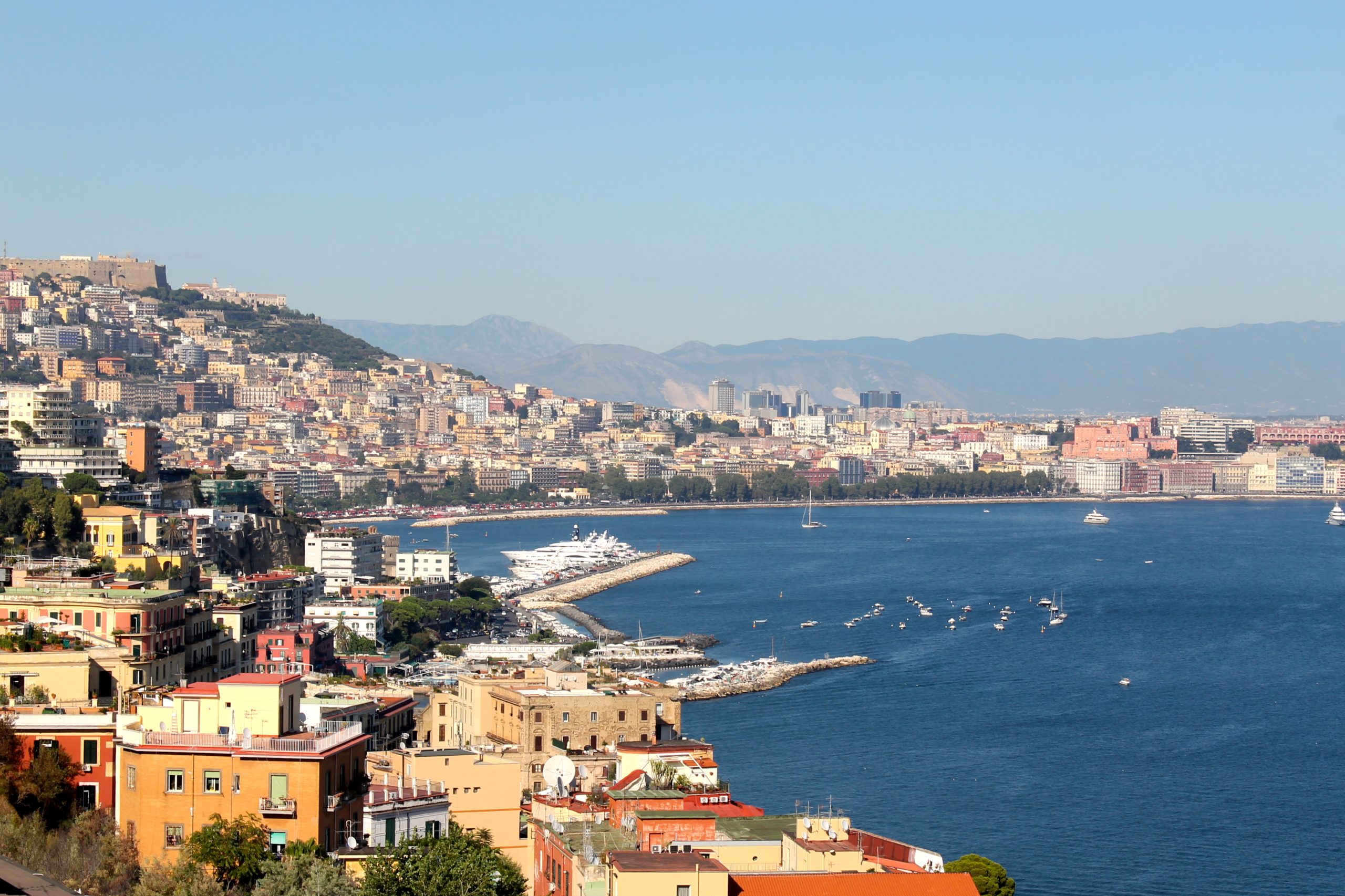Life must be replete with all that is sweet!
As Easter approaches, and with Napoli on my mind as of late, I’m reminded of the heavenly traditional desserts from this part of Italy: Sfogliatelle, babà al rum, graffe, sospiri. These pastries are always abundant throughout the year, moreover, the Neapolitans feel that their desserts must be substantial and satisfying. “Il dolce deve riempire la vita!” Life must be replete with all that is sweet!

At Easter time the Napoletani outdo themselves with delights such as Casatiello Napoletano, a savoury cake stuffed with salami and pecorino cheese; taralli, and of course, uppermost among the paschal baked desserts, is the renowned and incredibly delicious Pastiera.


I was first introduced to Naples’ famous Easter dessert, the pastiera, by two of my Neapolitan friends; Armanda, and Milena. I knew from the first bite that this would be a dessert I would have to learn to make and that it would count among my fovourites.
The pastiera is a type of cake or pie that might present itself at first sight as a rather plain, unembellished confection. But wait a minute! It is anything but! A variety of ingredients somehow come together to create a whole that is distinct and an exquisite medley of flavours and texture.
Whole wheat berries (known as grano cotto in Italian) are cooked in milk until creamy, then mixed with ricotta, sugar, eggs, a wonderful blend of spices and scents like cinnamon, vanilla and orange blossom water or millefiori. The filling is poured into a crust and baked until golden and firm. “It’s hard to describe but the result is like a crazy, perfumed cheesecake crossed with rice pudding in a pie. It’s surprisingly delicate, though, and incredibly addictive.” Emiko Davies, blog, posted April 18, 2011
While the pastiera is pretty straightforward to make, it is a time consuming endeavour. Tradition dictates that it should be made over a period of three days: at one time, the preparation was done on Holy Thursday to allow the raw grains to be soaked in water, which is then changed often over the course of three days, and then boiled in milk until tender. Nowadays, even though pre-cooked wheat is readily available, the Neapolitans still like to begin making their pastiera on Holy Thursday, to be followed by the preparation of both the pastry and the ricotta filling on Good Friday By cooking the pastiera early, the houses and streets are filled with the unique sweet and fruity scent of the orange blossom water and of the skillfully blended ingredients. It is customary also to prepare more than one pastiera in order to exchange it with friends and family.
Naturally, the pastiera can be made in one day. I make mine in advance, because, it actually tastes better when it’s allowed to sit for a day or two.
And then, with your first bite, you are transported to the sunny coast of Napoli— the aroma and scents of a traditional Easter, a celebration of abundance and renewal and a reminder of our many blessings.
,Buona Pasqua e Buona Pastiera!

There are a multitude of recipes out there for making pastiera; I think I’ve tried them all in my pursuit of making the perfect classic Neapolitan one. There are the complicated lengthy methods, the too easy, effortless recipes: for every Napoletano that bakes this dessert there is a different recipe. The ingredients are always the same however. Here is the one I found to be the most to my liking.
Pastiera napoletana
Ingredients for 2 pastiere, approx.. 28-30 cm in diameter.
Filling:
1 jar of grano cotto (560 g) (available at most Italian grocery stores)
300 g milk
1 tbsp. of cold butter
700 g of fresh ricotta (not light)
700 g sugar
7 eggs
3 yolks
1 pouch of vanilla flavoured sugar (vanillina)
2 vials of fior d’arancio (orange blossom water)
150 g candied fruit (optional) –-I do not like it.
A sprinkling of cinnamon (optional)
Crust:
500 g flour
200 g sugar
200 g butter
3 eggs
1 whole orange zest
Preparation:
Pour the contents of the jar of grano cotto into a saucepan, add milk and a tablespoon of butter or lard. Bring to a boil, stirring until the mixture will become thick and creamy.
Set aside to cool.
Meanwhile, prepare the pastry:
Flour a work surface; cut the butter into small pieces. In a bowl, mix the flour and sugar and add the butter. You can use a mixer for this operation.
Transfer the mixture onto the floured surface. Make a well in the center, add the orange zest, and add one egg at a time, mixing well with your hands. This step can also be done with your mixer. As soon as the first egg is absorbed add another and so on. Knead the dough quickly. Wrap the ball of dough it in plastic wrap and place it in the fridge to rest for half an hour.

At this point if the cream of wheat milk and butter has cooled, add the ricotta, sugar, whole eggs and yolks, the vials of orange blossom and vanilla. Mix well with electric mixer. I prefer simply to stir by hand so the texture of the grain and other ingredients remains intact. If you like, add the cinnamon and candied fruit.
Take your pastry dough from the refrigerator and roll it out to a thickness of about 1 cm. Butter 2 pie pans of about 28-30 cm in diameter or a larger springform pan. Line with the pastry.
Cut off the excess pastry with a serrated cutter.
Fill the shell with the prepared pastiera filling up to half a cm from the edge.

With the left-over pastry, cut out the strips to be used for the lattice top.
Gently place the strips over the filling without making them immerse, attaching them to the edge of the pastry.
Bake the pastiera in a preheated (350° F) oven for about an hour on the bottom rack of the oven. The pie should become a golden colour. Lower the temperature to 200 °F and let the pastiera sit in a semi-open oven for another 10 minutes.
Your pastiera should be well cooked on the outside but remain moist and spongy inside.
Allow the pastiera to cool in the pan before removing.
Allowing it to sit in a cool dry place for a couple of days only makes it better. Sprinkle with powdered sugar before serving.




